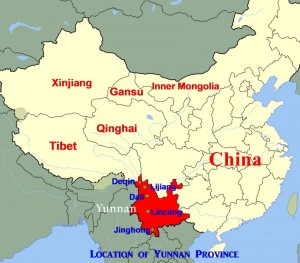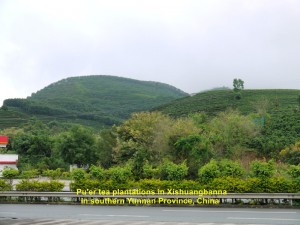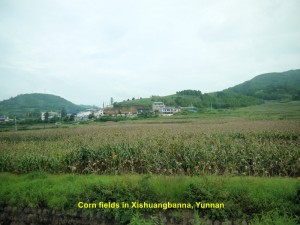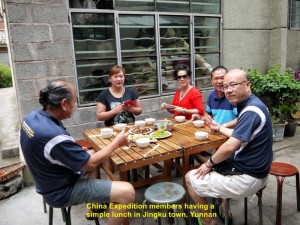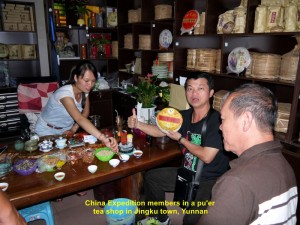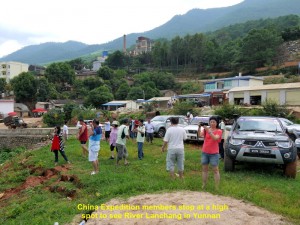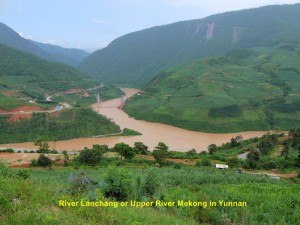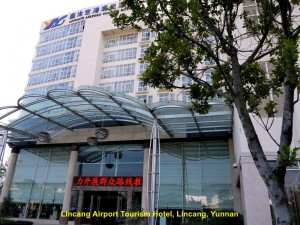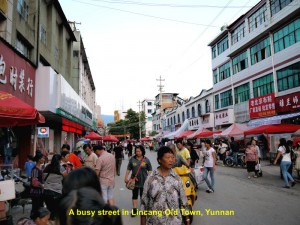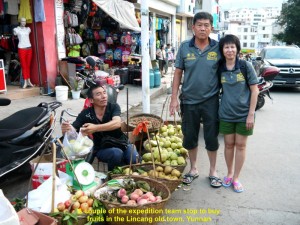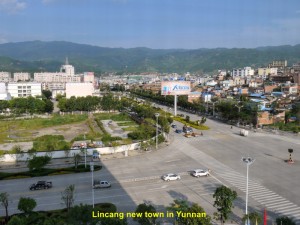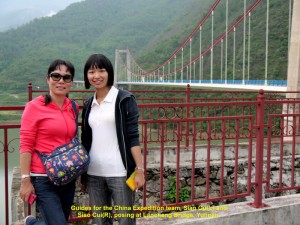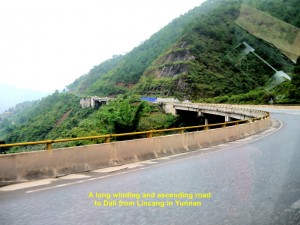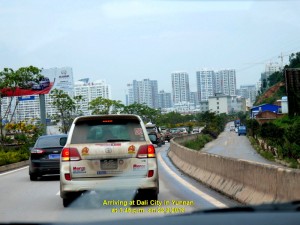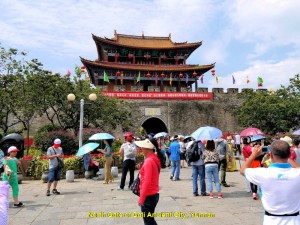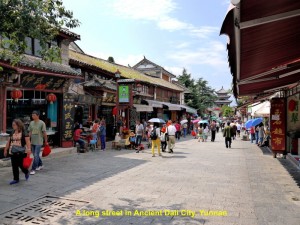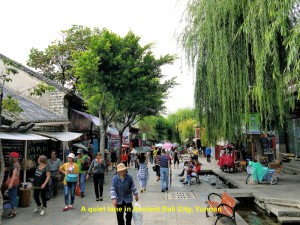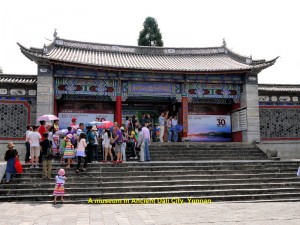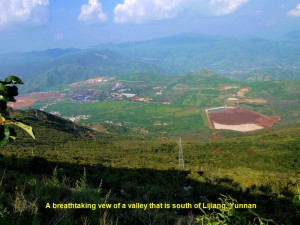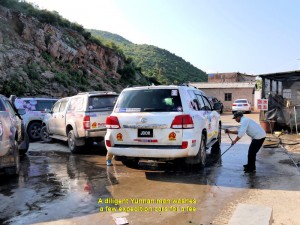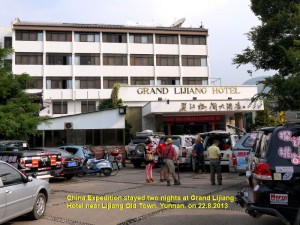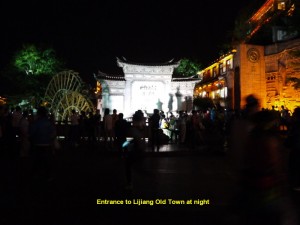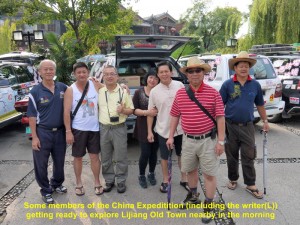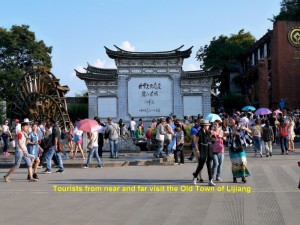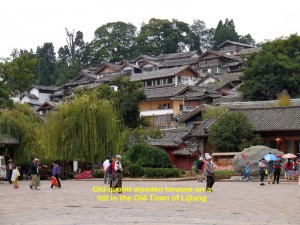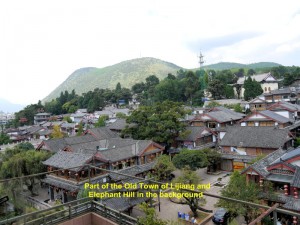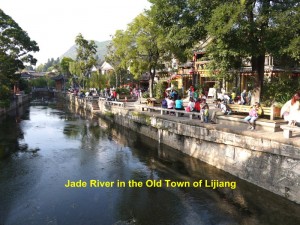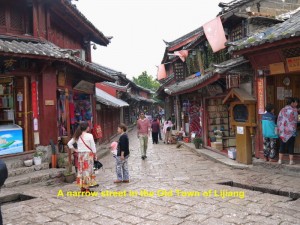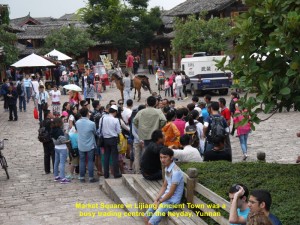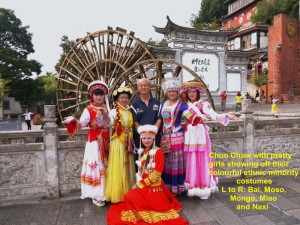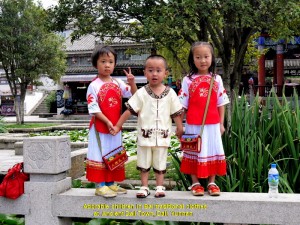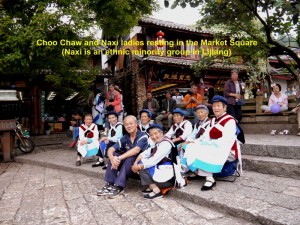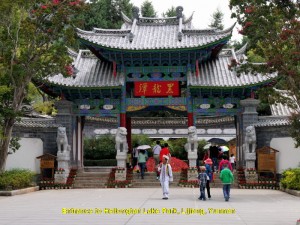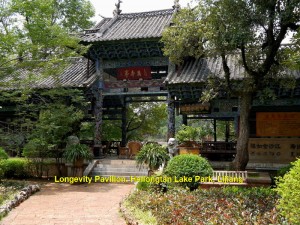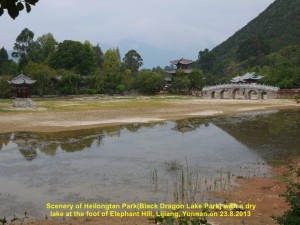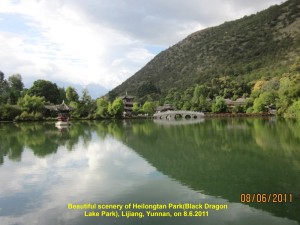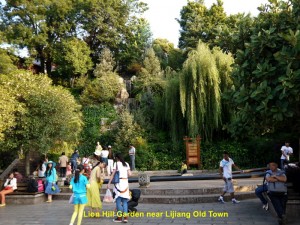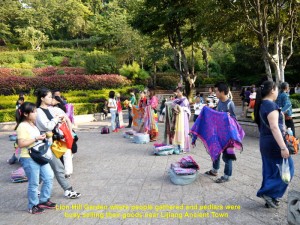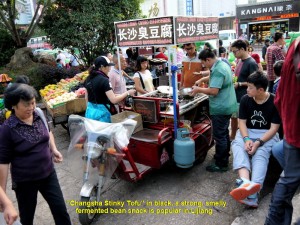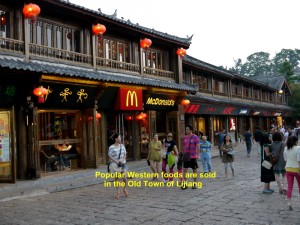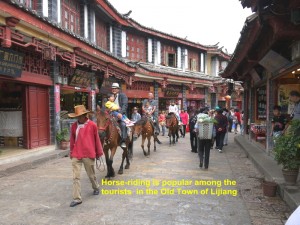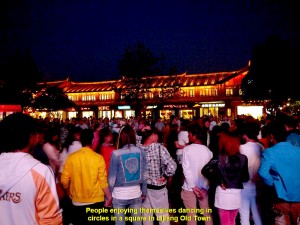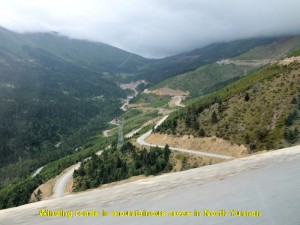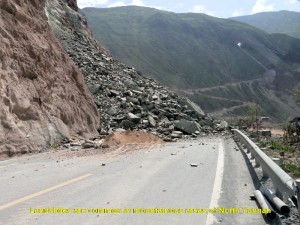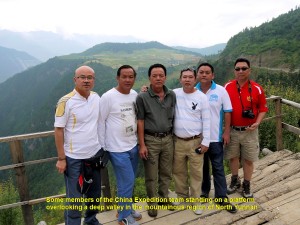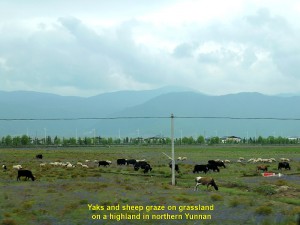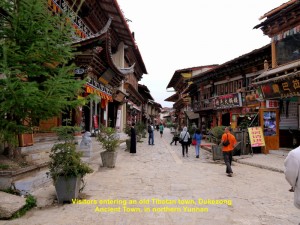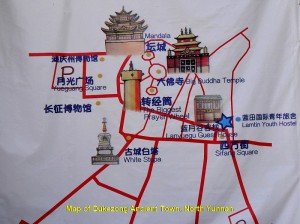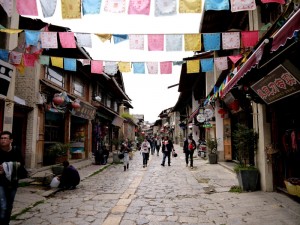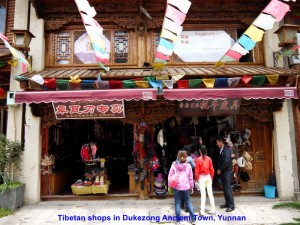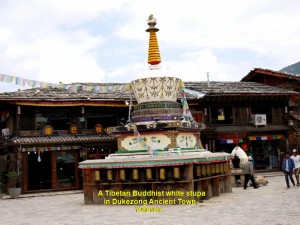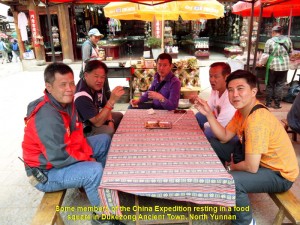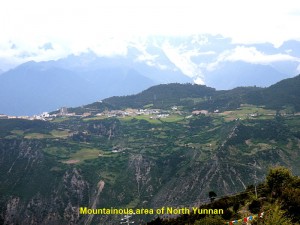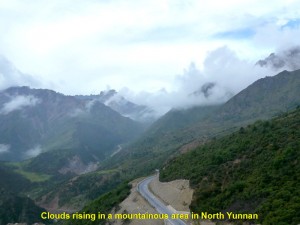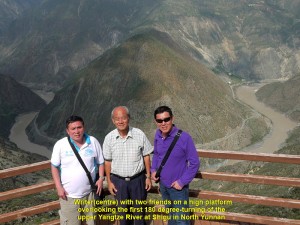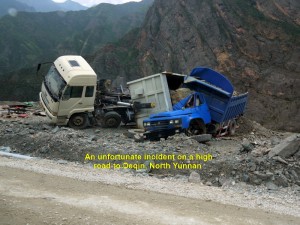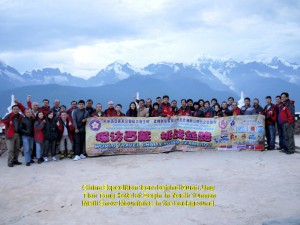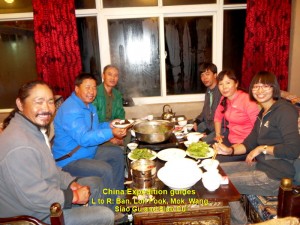Journal of My 2013 China Expedition Part II (Yunnan)
Journal of My 2013 China Expedition Part II (Yunnan)
(15.8.2013 – 17.8.2013)
Yunnan Journey(Day 7 – 10)
Day 7 (21.8.2013 Thursday)
Jinghong – Lincang
(Distance: 418 km)
Our China Expedition team had already travelled 6 days, safely, from Malaysia via Thailand and Laos to the present city, Jinghong, in Yunnan, China, and we still had a long journey ahead of us.
Today, at 8.10 in the morning, we left Jinghong for a long journey to Lincang. The road was winding and passing through several tunnels in the mountainous areas. Occassionally, landslides blocked parts of the roads. As we were travelling we came across plantations of pu’er tea and some farms of dragon fruits, corns, lotus plants and tobacco.
At 12.45 p.m. we arrived at a town, Jingku, where we had lunch and bought some pu’er tea(a popular fermented tea). An hour later, we moved on again.
At 4 p.m. we stopped for awhile on a high ground to see a picturesque view of a yellow river, Lanchang River or Upper Mekong River, and its surroundings. Half an hour later, we were off again.
At 5.10 p.m. we reached Lincang City, thanks to the good tarred road. After checking in at a hotel, Lincang Airport Tourism Hotel, and having our dinner, we walked to the Lincang old town nearby to have a look, as the day was still bright.
That old town had many streets and shops. There were many activities going on in the evening, especially along the streets where peldlars were selling their goods, such as clothes, fruits, snacks, footwear and kitchenware, to name a few, and the local people were looking for good bargains.
Later, we returned to the hotel and retired in our comfortable beds.
Day 8 (22.8.2013 Friday) Lincang – Dali – Ljiang
(Distance: 468 km)
At 8 a.m. we had a 10 minute-exercise in the hotel compound to stay healthy all the time, as our expedition was long and arduous. After all the owners of the China Expedition had checked their cars, we left Lincang for another long journey to Lijiang.
After two hours of travelling, we crossed a long, high suspension-bridge, Lanchang Bridge, that is over Lanchang River or Upper Mekong River. We stopped at the bridge to see the natural landscape of the place. Then we continued our journey. We were travelling on a long winding road that brings us to higher ground which was over 2000m.
Soon we reached a city, Dali. It has an ancient town near a lake, Erhai Lake. This ancient town is known as Dali Ancient City, and was built in 764 A.D.. It was a political, economic and cultural centre for a few dynasties in its heyday.
In 1998, with the help of local traders and authority, the ancient town was restored to its past glory. Surrounded by a rectangular wall with two gates, North Gate and South Gate, the town attracts lots of tourists from near and far.
We spent a short time at the ancient city, strolling, leisurely, along its main street, browsing at a few shops, visiting a museum and watching some visitors.
At 4.30 p.m. we left Dali City. On our way to Lijiang, we stopped at a high place to see a panoramic view of a wide valley below. Then we had a snack at a hawker-stall there. As we were eating a hardworking local man washed a few dirty expedition cars for a fee.
Then we were on the road again. At 7.50 p.m. we arrived at an ancient town of Lijiang, Lijiang Old Town, and checked in at Grand Lijiang Hotel nearby. After dinner, we walked to the old town nearby to watch people dancing in circles to the accompaniment of loud Chinese musics.
Day 9 (23.8.2013, Saturday) Lijiang
Today, we were free to go anywhere we wanted. Most of us walked to Lijiang Old Town to see what it was like nearby. That was my second visit.
This small ancient town is the remaining part of the ancient city. It is over 800 years old and was an important trading centre on the Ancient Horse-Tea Route where traders from India, Tibet and south-western China met and exchanged goods.
A river, Jade River, flows from the north to this town and then branches into three streams that run through it. In the beginning, houses were built along these streams. Later, houses were built close to each other in a haphazard manner along narrow streets.
It is a beautiful ancient town of hundreds of quaint wooden buildings of Naxi ethnic minority’s architecture. In 1997, it was declared as a UNESCO World Cultural Heritage site.
I spent a few hours strolling in the town and kept my camera busy. It was quite a popular place, as there were many tourists visiting this well-preserved and clean ancient town.
At 12 noon, I walked alone the old town to another place which is also a tourist attraction. Known as Heilongtan Park(Black Dragon Lake Park), it is not far from Lijiang Old Town. When I arrived at the park, I entered and saw a beautiful garden and some ancient buildings built during the Qing and Ming Dynasties.
As I walked further in, I was totally shocked to see a lake without water. I visited that place two years ago and was fascinated by its beautiful scenery when the lake was full of clear water. The scenery in the photo below was what I saw then and the scenery in the photo below it was what I saw two years earlier. “What a great difference with and without water in the lake in Heilongtan Park in Lijiang!” I told myself.
I walked back to Lijiang Old Town feeling disappointed about the scenery of the park. Before entering the old town, I was attracted by a hill, Lion Hill, which was beautifully covered with thick foliage and a garden where people gathered and pedlars were persuading passers-by to buy their goods.
When I walked over to the place, I smelt a familiar stinking fermented bean snack, “chou doufu”. I followed the odour and saw a man busy selling the stuff which was black. I watched him for a while. As the smell was too unpleasant for me, I did not crave for it. I walked away and went back to the ancient town to have a western fast food as my dinner for a change that evening.
After that delicious meal, I stayed for awhile in the town watching visitors passing by and people dancing in circles.
Day 10 (24.8.2013, Saturday) Lijiang – Deqin (Distance: 359km)
Today, we were going to leave for a place, Degin(3550m above sea-level), in the mountainous area of northern Yunnan. We would have to encounter colder climate, low atmospheric pressure and acute mountain sickness, as the area was over 3000m above sea-level. Besides, the roads were winding and certain parts of them were covered with landslides.
At 8 a.m. we started our journey from Lijiang and headed north. An hour later, we stopped at a high spot which was a vantage point for seeing a spectacular view of valleys, mountains, forests and a river, Jingsha River(Golden Sand River), the upper Mekong River.
After an hour or so of enjoying the sight of the natural landscape, we moved on again. As we travelled, we moved further north and to higher altitude, and the weather became colder. On the way, we saw Tibetan dwellings, and yaks and sheep grazing on high grasslands.
At 12.30 p.m. we reached an ancient Tibetan town, Dukezong Ancient Town. Located in Shangri-la County in Yunnan, it was over 1300 years old. It was once an important trading post on the Ancient Southern Silk Route or Tea-Horse Trade Route.
It had a few narrow streets lined with wooden shop-houses built in Tibetan architectural style. Tourists liked to visit this old town to see the old but beautiful quaint Tibetan buildings. Most of them were shops selling all kinds of Tibetan products ranging from accessories, clothing and leather shoes to silverware, gemstones, jewellery and swords. Besides, there were some restaurants which served Tibetan food.
(A few months after our visit to this ancient town, a big fire destroyed two thirds of it.) Owing to time constraint, we spent an hour at the ancient town and left at 2.30 p.m.. The journey to Deqin was tough as the road had numerous sharp bends and some stretches were covered with landslides. Besides, it went up higher to a height of over 4000m above sea-level and then down to Deqin at the height of 3550m above sea-level. But the scenes in the mountainous areas were breathtaking.
An hour after we left Deqin, we stopped at a popular vantage point from where we could see the first 180 degree-turning of the upper Yangtze River(Jinsha River).
After travelling the whole day, we finally reached Deqin at 7 p.m. and checked in at a hotel on a high ground facing an awesome sight of Meili Snow Mountains in the distance, and overlooking the city in the valley below. The hotel was known as Jing Tian Tang Hotel. Then we had dinner together at the hotel before we retired in our rooms.
Meili Snow Mountains(Meili Xue Shan) located south-east of Deqin in north-western Yunnan have over 20 peaks and 6 of them are over 6000m ab0ve sea-level. The highest peak is Kawakarpo(6740m). The sight of the mountains with snow on their peaks and glaciers on their slopes is always spectacular. To the Tibetan Buddhists, the mountains are a sacred place to them.
Journal of My 2013 China Expedition:
Written by Choo Chaw, Kluang, Johor, Malaysia

